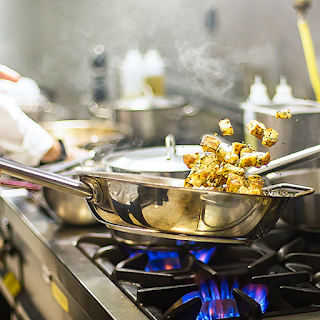From Paddy to Oil
Rice is an important staple food, and in Asian countries even an essential part of our daily diet. It contains numerous healthy nutrients if the quality is right.When brown rice undergoes a polishing process, the resultant products are white rice and the rice bran. Initially used in the animal sector, nutrition experts and scientists soon found out that rice bran oil was also beneficial for human consumption. Let’s delve deeper into this curious transformation from paddy to the refined rice bran oil.
Once the harvest of rice paddy is completed, the paddy rice is dried and then the husks of the cereal grains are removed in the rice mill. The proportion of husks is around 20% of the original weight of the rice. What is left after removal is the actual rice grain. This consists of the seedling, the membrane and the germ (found beneath the bran) of the rice grain.
After the rice has been harvested, the rice bran can be processed further. It is rich in vitamins, valuable fats and proteins. Rice bran oil is obtained by solvent extraction and subsequent refining of the rice bran. The bran itself is obtained by peeling the raw rice, which is still brown at this point. The oil needs to be extracted quickly as rice bran contains lipases and other enzymes that quickly break down carbohydrates, proteins and lipids. In order to inactivate these enzymes, the mass must be heated to 130 to 140 °. For the production process, the bran is heated up to 140 degrees, but this process is done briefly so as not to increase the number of fatty acids it contains.
The high-fat seedlings contain 15 to 25% oil and are treated with solvents such as hexane, alcohol or CO2 in order to gain access to the essential oils that are soluble in them. The solvent is then isolated and separated off again. What remains is the rice bran oil, obtained from the byproduct (rice bran) of the seedlings.
Often rice bran oil is then refined and not simply cold-pressed. The subsequent hot pressing, extraction of the oil and chemical refining remove emulsifiers and cloudy substances. A refining of the oil is used for the removal of undesirable flavors, colorants or accompanying substances. A particularly mild-tasting, light-colored oil is obtained.
The free or unsaturated fatty acids are then released. By adding caustic soda, these are bound and then washed out so that the oil becomes more durable. Without this step, it is very likely that the unsaturated fatty acids will cause the oil to go rancid soon. This is followed by the bleaching process. In a vacuum, the oil is heated to 70 to 90 ° and harmful substances are bound and thus released from the oil. In a final treatment process of damping or deodorization, the oil is heated to 270 ° with hot steam in a vacuum in order to destroy unwanted taste and odorous substances or pesticides or insecticides.
As a result of this process, the oil is now more durable, more heat-resistant, odorless and has a rather fine golden hue.



Comments
Post a Comment